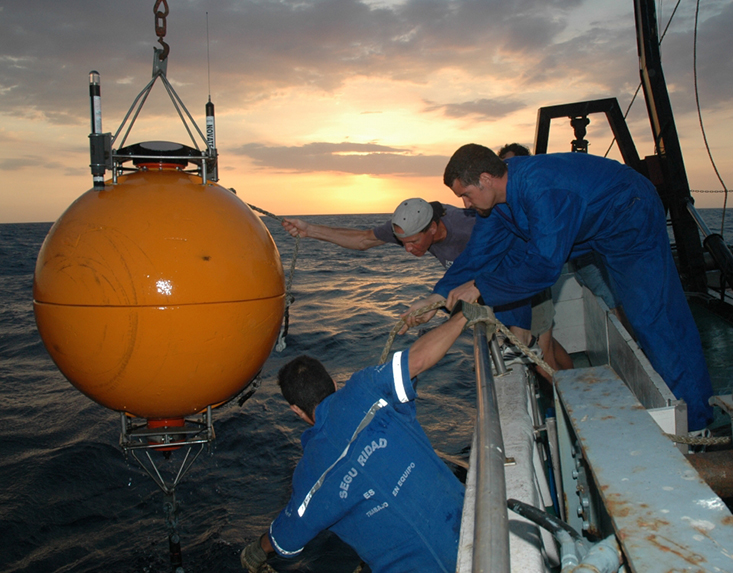Written by Kristen Kusek, Communications Director for USF CMS
ST. PETERSBURG, FL – Scientists in Venezuela and the United States established the CARIACO Ocean Time Series program, one of the longest running oceanographic studies in the world, in the Cariaco Basin, Venezuela, in 1995 – a year when the “Macarena” was a dance party favorite, U.S. postage stamps cost $.32, and the web browser Netscape debuted. It was a long time ago.
The team reported on the scientific dossier of the 21-year program, a tour de force for ocean science, in a recent issue of the Annual Review of Marine Science.
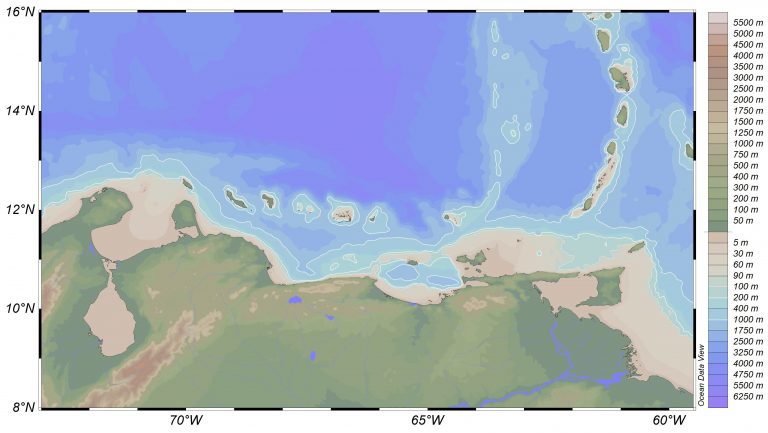
The CARIACO basin off the eastern Venezuelan coast is the world’s largest marine anoxic basin and home base for one of the longest running oceanographic studies on record.
The CARIACO basin off the eastern Venezuelan coast is the world’s largest marine anoxic
basin and home base for one of the longest running oceanographic studies on record.
In the Cariaco Basin, the world’s largest marine anoxic basin, neatly stacked sediments
provide one of the best climate records on the planet. Nestled off the eastern coast
of Venezuela, the basin has served as a living laboratory that allows scientists to
step back in time and see how the ocean responds to natural and human-induced climate
processes, including warming and cooling, and wet and dry periods in the Atlantic
Ocean and much of the Americas.
Recognized twice during its lifetime by UNESCO’s Intergovernmental Oceanographic Commission, the CARIACO Ocean Time Series program was one of only three comprehensive and sustained time series stations around the world focused on the ecology and biogeochemistry of ocean waters – and the only one in a tropical ocean setting. The program carried out 310 oceanographic expeditions, one or more almost every month, and involved more than 100 researchers from around the globe. The team developed standard methods now widely used and everyone made their data freely available–leading to more than 185 publications. They collected a spate of repeated chemical, physical, biological, ecological, and geological observations, and characterized seasonal to interannual changes in dissolved nutrients and oxygen, primary and secondary productivity, species diversity, sinking and suspended particle fluxes, and more — over a timeframe more than double the length of the Apollo space program. These repeated, long-term observations made it possible for scientists to measure changes in the ocean that could not be measured any other way. They also found several new species, including a new Order of bacteria, the Cariacotrichida.
But the legacy of CARIACO is greater than all of that.
“I am most proud of the strong partnership and friendships we developed between U.S. and Venezuelan scientists,” said Dr. Frank Muller-Karger, professor at the USF College of Marine Science (USF CMS) and architect of the CARIACO program. “The actual science and the discoveries we made are a product of that collaboration between people of different countries, different languages and cultures.”
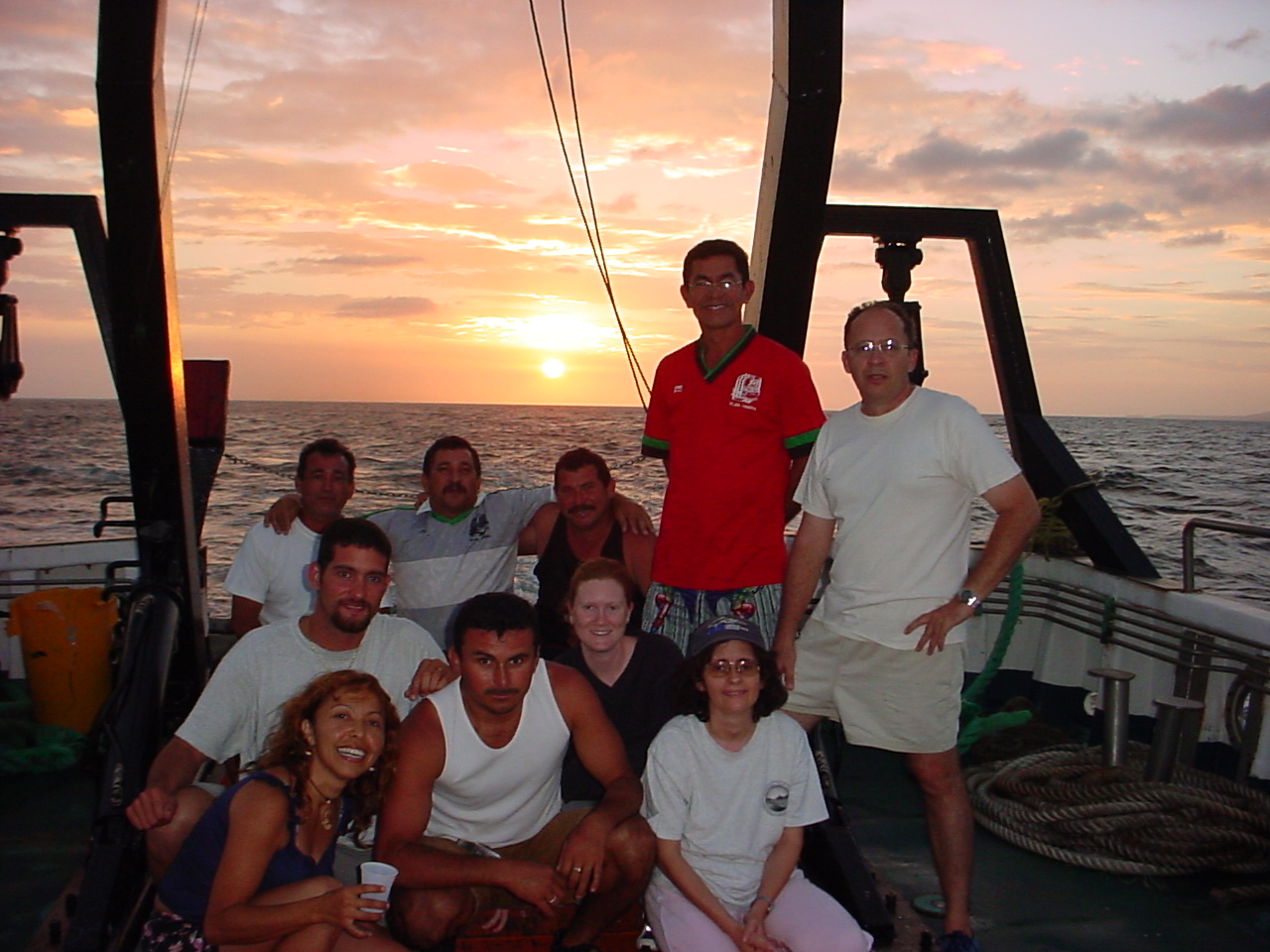
The sun sets on the 21-year CARIACO Ocean Time Series program, which was led by scientists from the U.S. and Venezuela and involved more than 100 researchers from the around the globe. Shown in the photo: Ramón Varela (Co-PI, EDIMAR/FLASA), Yrene Astor (Co-PI, EDIMAR/FLASA), José (Chuchú) Narváez (EDIMAR/FLASA), Aitzol Arellano (EDIMAR/FLASA), Michael McIntyre (USF/U.S.), Glenda Arias (EDIMAR/FLASA), Aparicio Narváez (First Officer), Maxi (crew), German Marin (Chef), and Julio (crew).
Yrene Astor Salazar, who served as the principal investigator from Venezuela at the
end of the project, had participated in it since its inception. “I cried when I heard
the CARIACO program would end,” she said. “It was a wonderful example of running a
successful, globally significant science program in a little-resourced, developing
Latin American nation.” Astor Salazar recently returned to Venezuela after a sabbatical
at USF.
The program officially ended in 2017 because of budget constraints at a time when growing political, economic, and safety concerns surfaced in Venezuela. CARIACO was supported by about US $1 million per year over its lifespan by the National Science Foundation and the Inter-American Institute for Global Change Research in the U.S., and in Venezuela by the Consejo Nacional de Ciencia y Tecnología; the Fondo Nacional de Ciencia, Tecnología e Investigación; and the Ley de Ciencia, Tecnología e Innovación.
“It’s always hard to sustain long-term observatories in foreign lands, but we have a lot to celebrate as far as the legacy of the CARIACO program,” said Muller-Karger.
The program was a partnership between the University of South Florida College of Marine Science, the University of South Carolina, and Stony Brook University in the US, and by the Fundación La Salle de Ciencias Naturales de Venezuela, the Universidad Simón Bolívar, the Universidad de Oriente, and the Digital Imaging Processing Center of the Ministry of Science and Technology of Venezuela.
A Time Series Trifecta
Ocean time series are multi-year records of relatively frequent observations taken in one area. They are analogous to continuous medical records of a person’s long-term health and provide a baseline for understanding when changes occur within the system—like when a person gets sick or the ocean changes as the planet warms. The longer the record, the better.
Aside from CARIACO, two other NSF-funded time series programs that span more than two decades still exist: the Hawaii Ocean Time-series (HOT) and the Bermuda Atlantic Time-series Study (BATS).
CARIACO was located within 100 kilometers of the continental margin of northern South America. This is an area characterized by active upwelling: the seasonal trade wind causes deeper, nutrient-rich water to rise to surface in this region every year between January and June. This leads to biological productivity that is much higher than that in the mid-ocean areas sampled routinely HOT or BATS.
Through the years, the CARIACO science team documented relationships between the physical, chemical, geological, and biological characteristics of the ocean. For example, strong upwelling typically means more phytoplankton, and phytoplankton are food for zooplankton. The zooplankton in turn feed large populations of sardines that support a vigorous fishing industry. In 2005, about 10 years into the time series, upwelling decreased in an anomalous manner. Phytoplankton then decreased and the sardine population crashed. Without predators, the zooplankton population increased. As a combined result of the decreased upwelling and strong fishing pressure in 2005, nearly 75 percent of the fishing industry collapsed, causing havoc in Venezuelan coastal fishing communities and canneries.
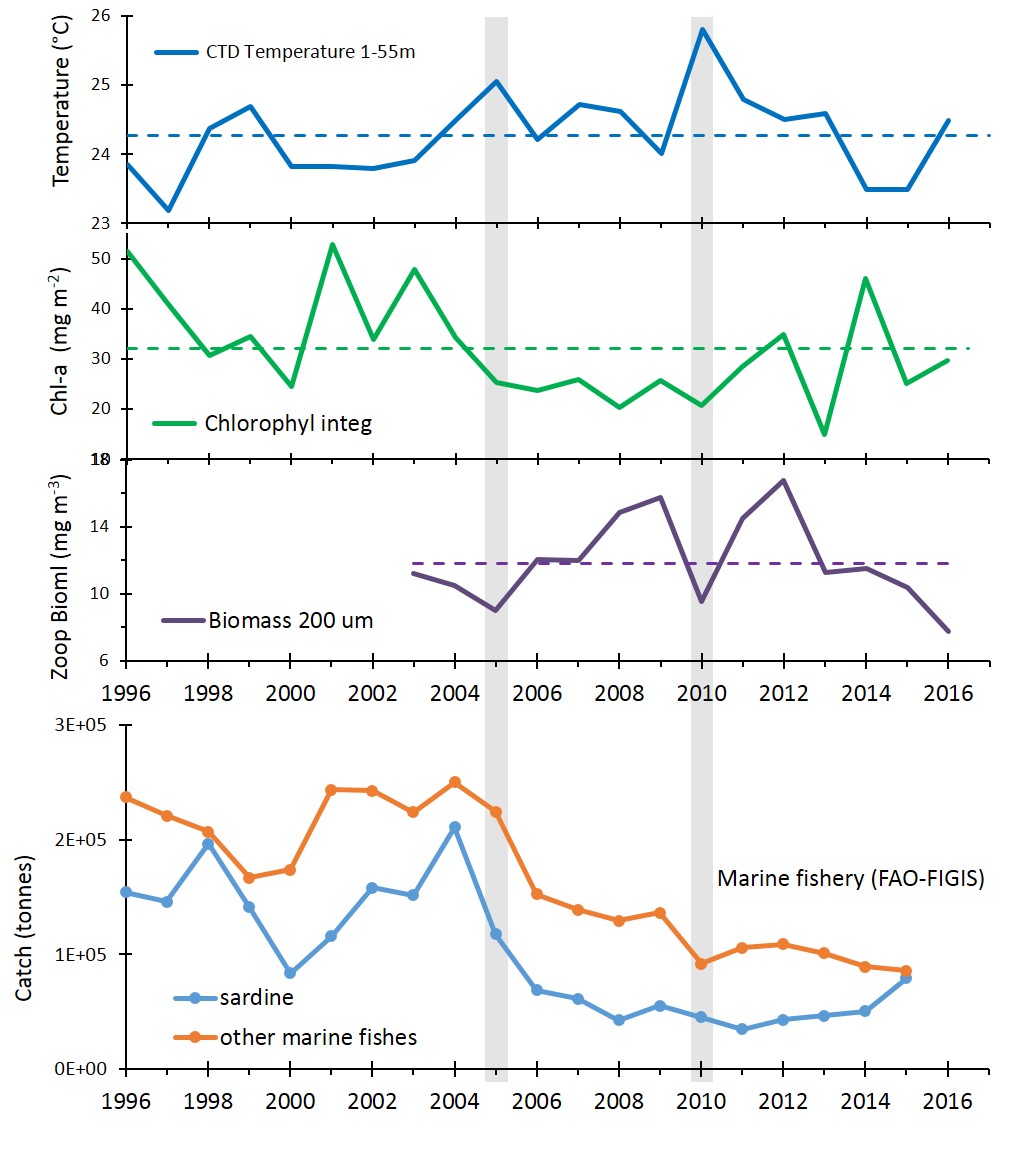
The CARIACO science team documented relationships between the physical, chemical, geological, and biological characteristics of the ocean. In 2005, upwelling decreased, as indicated by the warmer water temperature (shown on top in blue). Phytoplankton, indicated by the chlorophyll graph in green, then decreased and the sardine population (bottom graph) crashed. Without predators, the zooplankton population (shown in purple) increased. As a combined result of the decreased upwelling and strong fishing pressure, nearly 75 percent of the fishing industry collapsed in 2005. Upwelling also decreased in 2010.
“The time series provides textbook examples of the interconnections in nature,” said
Dr. Laura Lorenzoni, now a scientist at NASA. She served as a research associate for
the majority of the CARIACO program and started working on it while still an undergraduate
student in Venezuela.
The Cariaco Basin is also a tectonically active area, Lorenzoni said. In 1997, a strong magnitude 7 earthquake shook the basin for 10 seconds, causing sea level to retreat between 20-30 meters (65-100 feet). This spawned a tsunami that affected the southeastern margin of the basin with six-plus-foot swells. For the first time, the time-series captured the submarine landslide that resulted from this earthquake. The researchers used a series of robotic sediment traps to catch samples of the landslide as it was happening.
Other earthquakes shook the region in subsequent years. The expedition that took place after an earthquake in 2009 was one of Lorenzoni’s favorites because, for the first time, she and the team observed in real time how the earthquake led to changes in water chemistry compared to what they had measured a day earlier. “But we were just starting to scratch the surface of what it all meant,” she said.
“CARIACO was also the only time series we have in the tropics,” Lorenzoni said. The program ended in an active hurricane year, so the team missed the opportunity to continue sampling the water column and sediments in the wake of a hurricane. “That’s critical information for countries in the tropics and we missed it,” Lorenzoni said. “That is one of the many reasons that it really hurt to see the program terminated.”
CARIACO and Climate Change
A significant legacy of the time series is new understanding about how climate change is affecting the ocean.
CARIACO, the name of the project, stands for Carbon Retention in a Colored Ocean. “Our job was to measure and characterize the major processes that cause changes in the type, amount and composition of particles that settle to the bottom of the basin,” said Dr. Enrique Montes, a researcher at the USF CMS who is from Venezuela and worked on the CARIACO time-series starting in 2006. These particles carry a signature of the present climate that is preserved at the bottom of the Cariaco Basin.
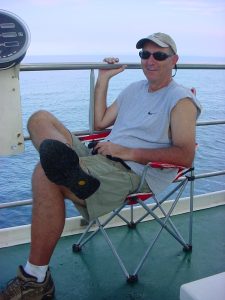
Dr. Robert Thunell was one of the principal investigators of the award-winning CARIACO Ocean Time Series program. He passed away in July 2018 and the CARIACO team would like this story to serve as one small tribute to such a tremendous human being and scientist.
The Cariaco Basin is well known for its anoxic waters and sediments. Scientists from
around the world began studying it in the 1940s. The part of the water column without
any oxygen stretches from about 140 meters to the bottom (1,380 meters). The sediments
are undisturbed because there are no animals reworking the sediment, as they do in
waters with oxygen. The particles that settle to the bottom from the surface of the
ocean nearly a mile above are layered season after season, year after year, and decade
after decade. These layers offer as close to a bird’s eye view as you can get of how
the climate has changed over the past several hundred thousand years.
The shells and other remains of marine organisms, sediment from rivers, pollen, dust, and other particles settle to the bottom of the basin and pile up through time. Scientists collect long cores of these sediments to reconstruct past ocean and climate conditions by ‘dating’ the age of each layer. They have analyzed the composition of several elements in the sediments to track, for example, how much of the carbon released into the atmosphere by the burning of fossil fuels has been absorbed by the ocean.
“We measured clear and unambiguous signals of the carbon burned by humans in the sediments falling through the water. They have accumulated at the bottom of the ocean through the life of the time-series,” said Montes. They also observed warming and a decrease in the pH of sea water near the ocean surface, which is the result of carbon dioxide in the atmosphere dissolving into the sea water.
“There are very few places in the world where you can see these processes unfolding at this high temporal resolution,” said Montes. “This was a world-class effort in one of the best places on the planet to do oceanography.”
The data records that CARIACO leaves behind will be used by scientists representing a wide spectrum of disciplines for many years to come, said Montes.
